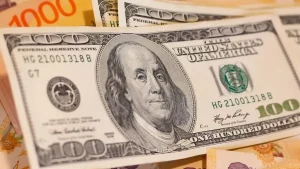Tourism will create more jobs in Northern Ireland than manufacturing over the next five years, according to a report.

The Blueprint for Tourism report is the result of a major review of the tourism and hospitality industry conducted for the Northern Ireland Hotels Federation and is to be presented at a conference in Belfast on Tuesday.
President of the federation Howard Hastings said the report indicated that the hospitality sector could become the most effective short-term contributor to employment growth in the province.
Speaking before the conference, Mr Hastings said that during 2000, employment in the hospitality sector grew at more than twice the Northern Ireland average and 50% faster than the entire service sector.
Regions like ours are rarely afforded second chances to re-brand themselves and we cannot afford to get it wrong
|
|
Howard Hastings
NI Hotel Federation |
Over the next decade, tourism could be the fastest-growing sector of the economy after software, he predicted.
«Currently the local economy is undergoing a period of uncertainty as a result of the global slowdown and the events of 11 September,» he said.
«However, Northern Ireland as a tourist destination is better placed than other regions in the UK and Ireland to grow strongly over the next few years.»
Mr Hastings said his organisation had concluded that tourism could deliver significant numbers of new jobs by 2010, at a lower cost to government, and faster, than any other sector of the economy.
Co-operative strategy
Urging the government and private sector to work with the industry in creating a cohesive strategy for tourism, he said: «In the past Northern Ireland has demonstrated that it can attract visitor numbers on a par with Ireland and the UK.
«Now we have a unique opportunity to make a new start with a new strategy.
«Regions like ours are rarely afforded second chances to re-brand themselves and we cannot afford to get it wrong.»
Calling for a radical programme of marketing, innovation and training to attract and retain visitors, he said Northern Ireland was operating well below its potential.
He pointed out that tourist numbers fell 60% during the first four years of the Troubles and it took nearly 30 years to get them back to where they were in 1968.
Political stability delivered tourists, he said, and in the year after the 1994 ceasefires, Northern Ireland visitor numbers grew 500% faster than both the EU and UK average.
Conference location
Mr Hastings said that Northern Ireland was on the way to becoming a preferred conference location, with 25,000 overnight conference stays in 1999 alone.
The report said the industry had the capacity to welcome a significant increase in visitor numbers with little additional investment in new accommodation.
The hospitality sector had invested more than £50m in capital projects during 1999 – equivalent to 15% of total industry revenues and more than virtually any other sector in the province, it said.
Among recommendations in the report was the development of a global strategy to market Ireland as a single destination, while creating and maintaining a distinctly regional Northern Ireland brand.
It also proposed the avoidance of internal competition between tourism providers and particularly local councils, by creating a cohesive marketing strategy based around market-led and clearly defined sectors and segments.
Sebastián Casanova ; TSH Caballito T.N





